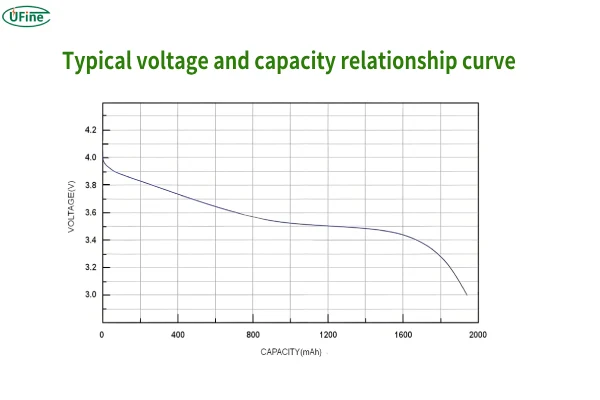
Batteries are the unsung heroes of our modern world, powering everything from our smartphones and laptops to electric vehicles and medical devices. But understanding the language of batteries can be a bit confusing, especially when it comes to voltage. What do terms like “nominal voltage” and “open circuit voltage” mean? How do you find this information on a battery? This in-depth guide will demystify the concept of battery voltage, providing a clear and concise explanation for anyone who wants to understand the power behind their batteries.
Part 1. Battery voltage
Voltage, often measured in volts (V), is a fundamental concept in electricity and represents the electrical potential difference between two points. In the context of batteries, voltage signifies the amount of electrical energy stored within the battery. Different types of voltage provide insights into various aspects of a battery’s performance and capabilities. Here’s a comprehensive breakdown of common battery voltage types and their significance:
1. Nominal Voltage (V): The Standard Measure of Battery Power
- The Average Power Output: Nominal voltage, often denoted as “V” on battery labels, represents the average voltage a battery provides when it’s fully charged. It’s the most common voltage type you’ll encounter and is a good starting point for understanding a battery’s power potential.
-
Why it Matters: Nominal voltage helps you compare different batteries and choose one that’s suitable for your device. For example, a 12-volt battery will provide a different level of power than a 3.7-volt battery. Nominal voltage is also crucial for understanding the operating voltage of a device, ensuring compatibility and preventing damage.
2. Open Circuit Voltage (Voc): The Maximum Potential
-
The Voltage Without Load: Open circuit voltage is the voltage measured across the battery terminals when no current is flowing. It’s typically slightly higher than the nominal voltage because there’s no energy being drawn from the battery.
-
Why it Matters: Open circuit voltage is important for understanding the battery’s maximum potential voltage. It’s often used in battery testing and diagnostics to assess the battery’s health and capacity. A higher open circuit voltage generally indicates a healthier battery with more stored energy.
3. Cut-Off Voltage (Vcutoff): The Minimum Safe Discharge Point
-
The Threshold for Battery Protection: Cut-off voltage is the minimum voltage that a battery can safely discharge to before it needs to be recharged. Going below this voltage can damage the battery, reducing its lifespan and performance. Think of it as a safety limit to prevent over-discharge.
-
Why it Matters: Cut-off voltage is essential for protecting your battery from over-discharge. Many devices and battery management systems have built-in cut-off mechanisms to prevent the battery from being discharged below this critical point. Understanding this voltage helps you avoid damaging your battery and prolong its lifespan.
4. Charging Voltage (Vcharge): The Power of Recharging
-
The Voltage for Battery Recharging: Charging voltage is the voltage that a charger uses to charge the battery. It’s typically higher than the nominal voltage to ensure the battery is fully charged. Think of it as the “fuel” needed to replenish the battery’s energy.
-
Why it Matters: Charging voltage is important for ensuring the battery is fully recharged and ready for use. Using the correct charging voltage is crucial for maximizing battery lifespan and performance. Using the wrong charging voltage can damage the battery or prevent it from reaching its full capacity.
5. Voltage Sag: The Impact of Load on Battery Performance
-
The Voltage Drop Under Load: Voltage sag is the temporary decrease in voltage that occurs when a battery is under load. This happens because the battery’s internal resistance causes a voltage drop as current flows through it. Imagine it as a slight dip in the battery’s energy output when it’s working hard.
-
Why it Matters: Voltage sag can affect the performance of devices, especially those that require a constant voltage. Batteries with lower internal resistance will experience less voltage sag, providing more consistent power even under heavy loads.
Useful Overview of Lipo Battery Voltage
Part 2. How to read nominal voltage?
Reading battery voltage is usually straightforward, but there are a few key things to keep in mind:
-
Look for the “V” symbol: The nominal voltage is typically denoted by the letter “V,” which stands for “volts.”
-
Identify the number: The number next to the “V” symbol represents the nominal voltage of the battery.
-
Example: A battery labeled “3.7V” has a nominal voltage of 3.7 volts.
-
Additional Information: Battery labels often include other information, such as the battery’s capacity (measured in amp-hours or milliamp-hours), chemistry (e.g., lithium-ion, lead-acid), and dimensions.
Part 3. Comparing battery voltage types
Here’s a comparison table that highlights the key differences between the various battery voltage types:
| Voltage Type | Description | Importance |
|---|---|---|
| Nominal Voltage (V) | Average voltage when fully charged | Comparing batteries, choosing the right battery for your device |
| Open Circuit Voltage (Voc) | Voltage without load | Battery testing and diagnostics, understanding maximum potential voltage |
| Cut-Off Voltage (Vcutoff) | Minimum safe discharge voltage | Protecting the battery from over-discharge, extending battery lifespan |
| Charging Voltage (Vcharge) | Voltage used to charge the battery | Ensuring full charge, maximizing battery lifespan |
| Voltage Sag | Voltage drop under load | Understanding battery performance under load, choosing batteries with lower internal resistance |
Part 4. How to find nominal voltage?

You can find nominal voltage information in several places:
-
Battery Label: The most common place to find nominal voltage information is on the battery label itself. Look for the “V” symbol and the corresponding number.
-
Battery Packaging: The packaging for batteries often includes information about the voltage, capacity, and other specifications.
-
Manufacturer’s Website: You can often find detailed specifications for batteries on the manufacturer’s website.
-
Online Retailers: Online retailers typically provide detailed product descriptions, including voltage information, for the batteries they sell.
-
Device Manuals: The manual for your device will often specify the required battery voltage.
Part 5. How to calculate the nominal voltage of the battery?
If you can’t find the nominal voltage on the battery label or in the documentation, you can sometimes calculate it. Here’s how:
-
Count the cells: Most batteries are made up of multiple cells connected in series. Each cell has a nominal voltage.
-
Multiply by the number of cells: Multiply the nominal voltage of a single cell by the number of cells in the battery to get the nominal voltage of the battery.
-
Example: A battery with three 3.7-volt cells connected in series will have a nominal voltage of 11.1 volts (3.7 volts x 3 cells = 11.1 volts).
Part 6. Conclusion
Understanding battery voltage is crucial for choosing the right batteries for your devices and ensuring they operate safely and efficiently. By learning how to read battery labels, find voltage information, and even calculate it, you can make informed decisions about battery power and unlock the full potential of your devices. Whether you’re powering a smartphone, a laptop, or an electric vehicle, a clear understanding of battery voltage is key to maximizing performance and extending battery lifespan.
Related Tags:
More Articles

Battery Load Test: A Comprehensive Guide
Step-by-step battery load test guide for car, solar & industrial use. Learn how to load test a battery, interpret voltage charts, and avoid common mistakes.
The Comprehensive Guide to Battery Balancing and Battery Balancer
Discover how battery balancers improve lithium battery performance, lifespan, and safety. Learn types, functions, and tips to choose the right balancer.
What Is the Best Voltage for a Chainsaw Battery?
Compare 12V-80V chainsaw batteries for light pruning, medium firewood, and professional cutting. See best battery chainsaw with runtime charts and safety tips.
Lithium VS. Alkaline Batteries: A Comprehensive Comparison
Lithium batteries last 3–7× longer than alkaline and perform better in cold weather. Compare lifespan, cost, safety, and best uses to choose the right battery.
Comparing Lithium-Sulfur and Lithium-Ion Batteries: Which is Right for You?
Compare lithium-sulfur (Li-S) and lithium-ion batteries on energy, lifespan, cost, safety, and applications. Best choice for drones, EVs, and electronics.



